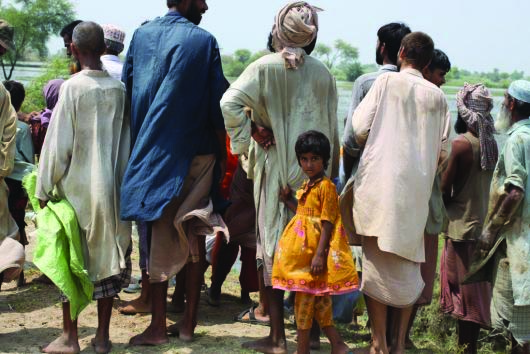Pakistan’s ever-increasing population is thriving in an economy, which undergoes several upheavals periodically. The population of Pakistan does not equally gain from the benefits of its economic growth. The economy of Pakistan continues facing an uneven income and wealth distribution and the high poverty rate.
There are many facts to be considered about the scenario of poverty in Pakistan in order to understand the wealth gap and poverty situation. The first and foremost fact about poverty in Pakistan is that there has been an increase of more than 40% in the poverty of Pakistan in the past two years. According to Business Recorder, the poverty in the population has increased from 69 million to 87 million by the end of 2020. Numerically, the poverty value of 87 million is really high in proportion to the current population of 220.86 million in Pakistan.
The macroeconomic crisis in Pakistan in the past couple of years has increased significantly. A budget deficit of $18 billion had been accrued by the end of year 2018, which limited the government’s spending. The economic growth resultantly slowed, which accompanied with the COVID 19 pandemic has further limited economic activity of the country. It has led to lesser spending by the government on the welfare projects thereby limiting support and assistance of the poor population. Consequently, the poor population continues to suffer, which accelerates the poverty rate of Pakistan.
The poverty-stricken population in Pakistan has been greatly affected by COVID 19 pandemic. Mostly women, children, disabled people and aged people are largely affected in the poor population. They majorly suffer from ill health and malnutrition and are more vulnerable to the virus of COVID 19 pandemic. As part of a recommendation by United Nations, this cohort of the population should be provided a greater access to the health facilities owing to their weaker health status.
A COVID 19 secretariat at Pakistan’s planning commission has been established by United Nations Development Program in order to control the economic crisis resulting due to the pandemic. It aims at development of the social reforms for the citizens affected by corona virus as well as for the poor population.
The poverty-stricken population in Pakistan has been greatly affected by COVID 19 pandemic. Mostly women, children, disabled people and aged people are largely affected in the poor population. They majorly suffer from ill health and malnutrition and are more vulnerable to the virus of COVID 19 pandemic. As part of a recommendation by United Nations, this cohort of the population should be provided a greater access to the health facilities owing to their weaker health status.
Another grave scenario of poverty is evident in the child labor of Pakistan despite stringent laws to curb it. It prevails as part of involuntary labor services from the children, who are willing to work to feed their families amidst financial crisis. However, child labor in hazardous jobs has been eliminated to a greater extent due to special laws and regulations passed against it.
Considering the adverse state of poverty in Pakistan, different relief schemes to alleviate the poverty have been launched by the government of Pakistan. Pakistan’s premier, Imran Khan has adopted a strategy to alleviate poverty under its poverty alleviation and the social safety division. It’s different Ehsaas programs aim to provide relief and protection to the poor population. They provide financial support to the poor people, and look after needs of poor orphanages. Some programs aim to enhance the nutrition of those in need and assets and cash to the underprivileged for establishing their livelihoods. This program has been a source of social welfare programs. In addition, the government has been active in its efforts to deal with the poverty crisis arisen during the COVID 19 pandemic.
The poverty crisis has been further accelerated in Pakistan amidst the covid-19 pandemic. It has led to jobs of many and the poor people in particular have suffered the most. There is a dire need to formulate social welfare programs to cater to the growing financial needs of the poor population especially during the pandemic.























